A Jones fracture is a fracture of the proximal metadiaphyseal junction of the fifth metatarsal bone that involves the 4th-5th metatarsal articulation.
On this page:
Pathology
It is a transverse fracture at the base of the fifth metatarsal, 1.5 to 3 cm distal to the proximal tuberosity at the metadiaphyseal junction, without distal extension.
Mechanism
The fracture is believed to occur as a result of significant adduction force to the forefoot with the ankle in plantar flexion 5.
Radiographic features
Plain radiograph/CT
Jones fracture is located at the metadiaphyseal junction, approximately 2 cm (1.5-3 cm) from the tip of the 5th metatarsal, and has a predominantly horizontal course. It should not extend distally.
Treatment and prognosis
Relative to avulsion fractures, Jones fractures are particularly prone to non-union (with rates as high as 30-50%) due to being in a vascular watershed zone, and almost always take longer than two months to heal 2.
Displacement of the fracture can increase with persistent weight-bearing, therefore, immobilization is important as part of the initial therapy, with a non-weight bearing cast for 6-8 weeks. Indications for non-operative management include undisplaced fractures and fractures in patients with limited activity (i.e. recreational athletes) 7.
Operative management is indicated in patients that are elite or competitive athletes or in non-operatively managed fractures when delayed union has occurred 7,8. Management includes either intramedullary screw fixation or open reduction and internal fixation (ORIF is also the main management option as a salvage procedure when there is non-union following screw fixation) 7. The outcomes are similar with almost 100% union rates 7.
Internal fixation and even bone grafting may be required in cases of non-union, or where the fracture is significantly displaced.
History and etymology
It was first described by Sir Robert Jones (1857-1933), Welsh orthopedic surgeon, in 1902. Jones was also an early advocate of the potential usefulness of x-rays in medical practice; see article on Charles Thurstan Holland for further details 3,6.
Differential diagnosis
A number of fractures occur at the base of the 5th metatarsal (see fractures of the proximal fifth metatarsal) as well as entities that mimic fractures. These include:


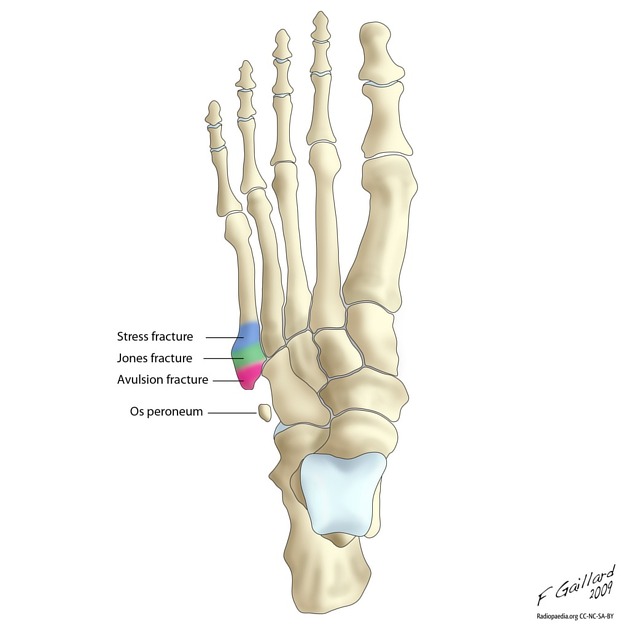

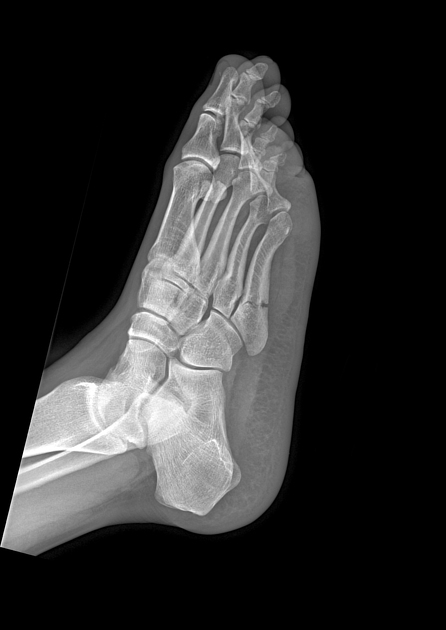
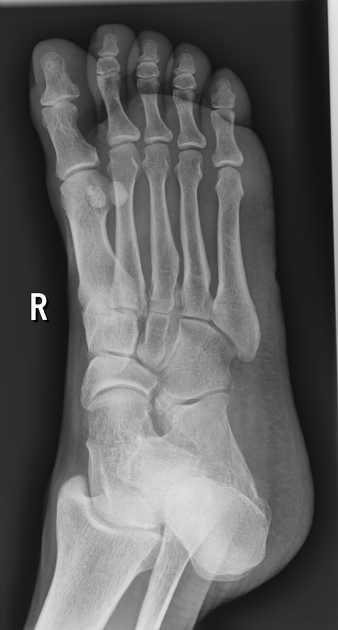
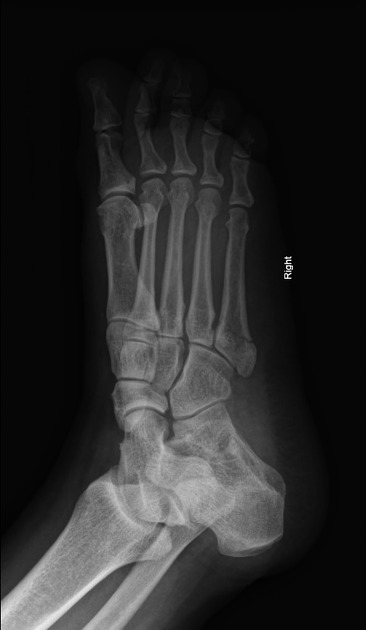
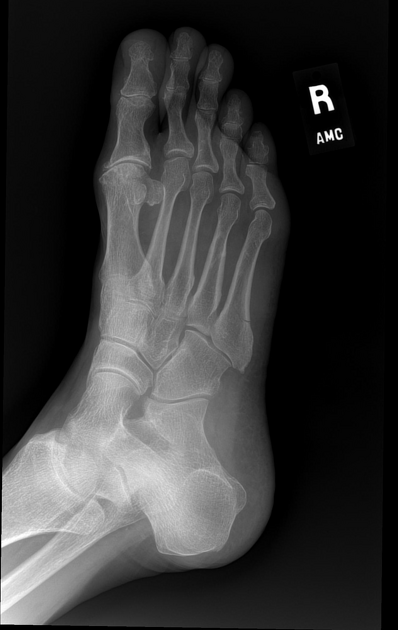
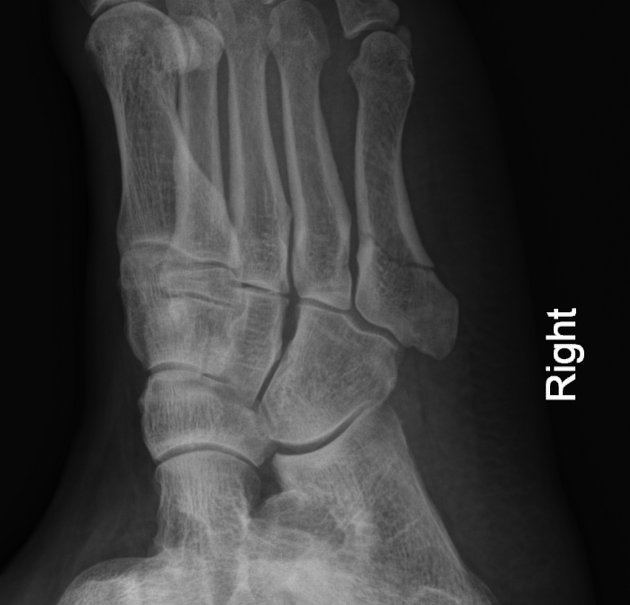
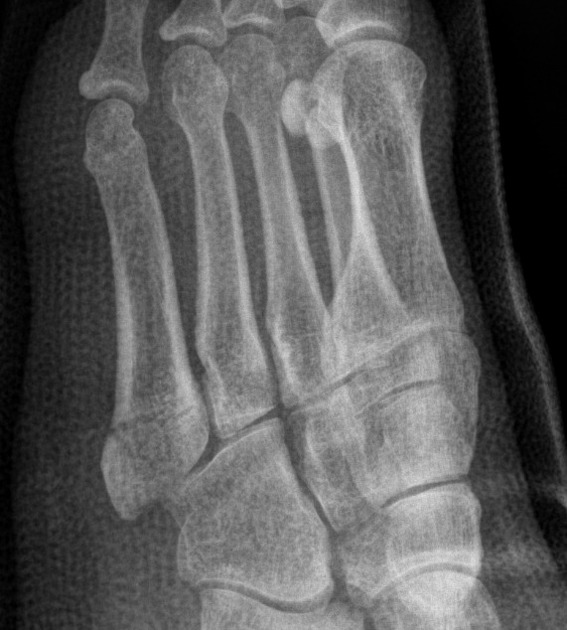
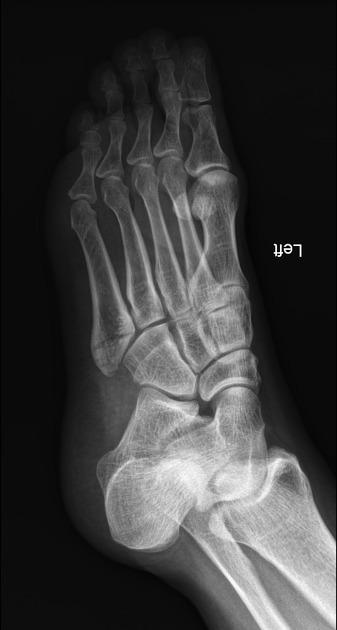
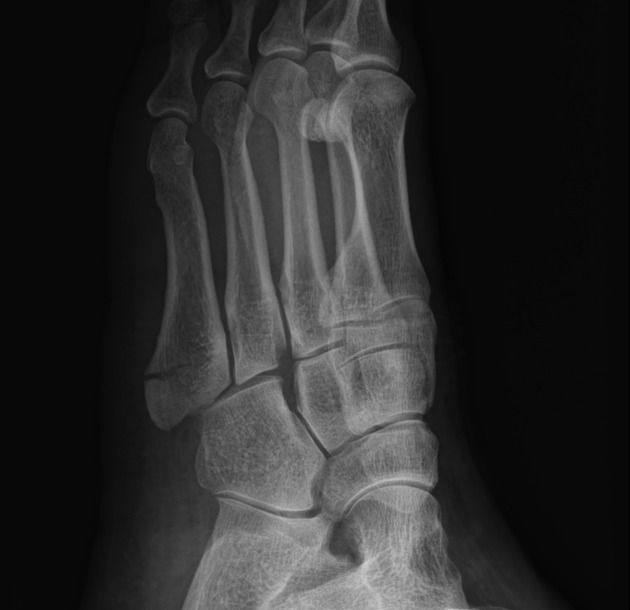
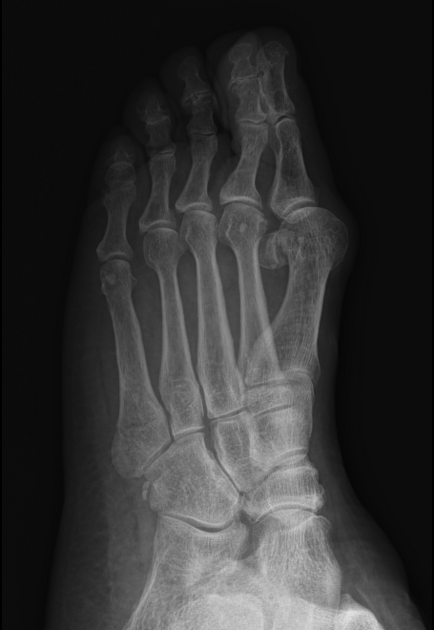
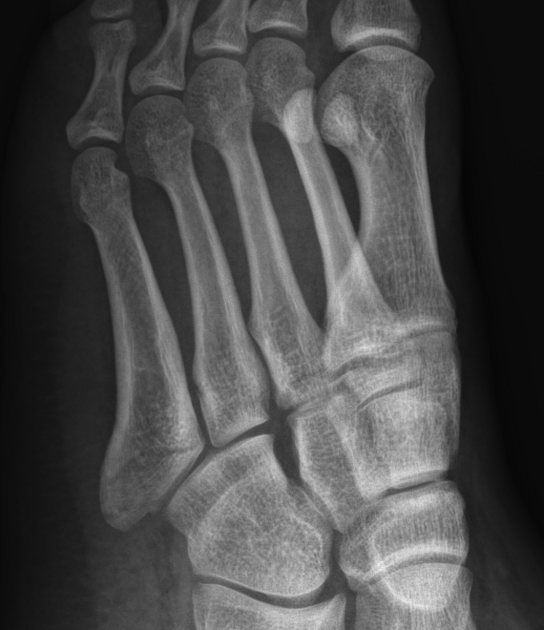
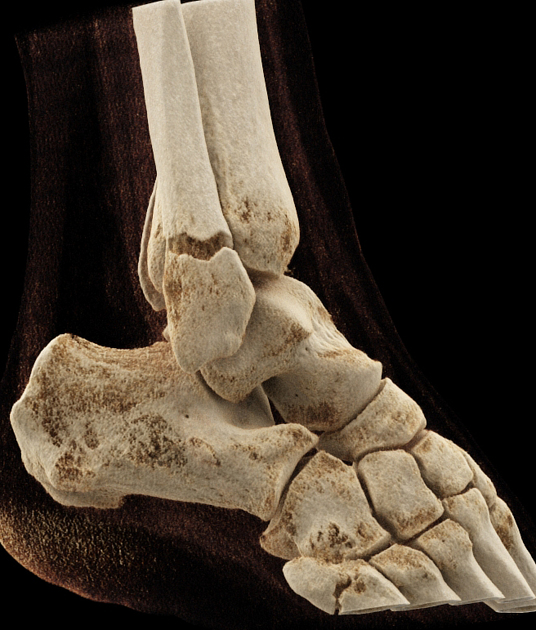
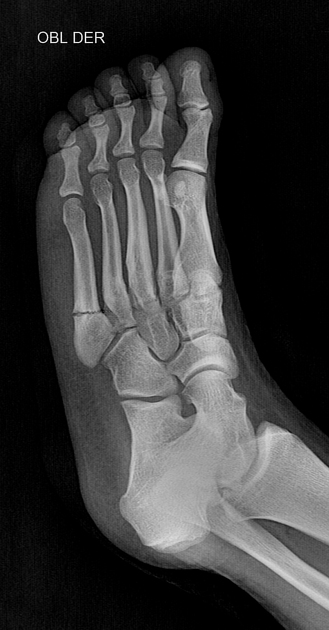

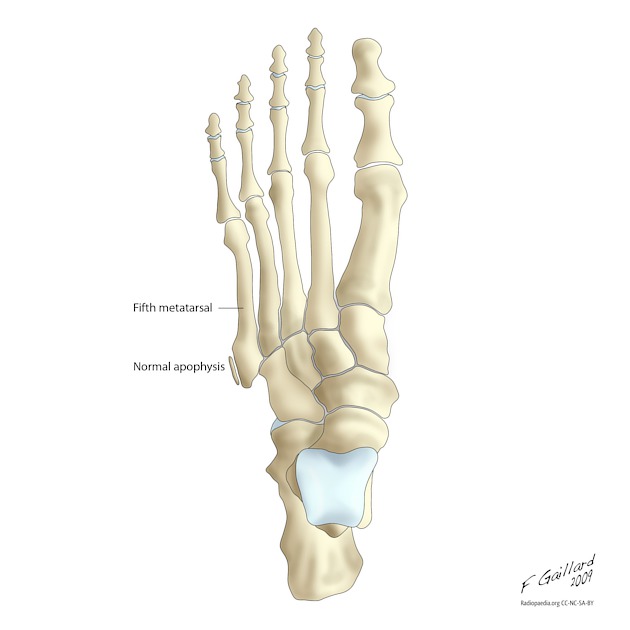

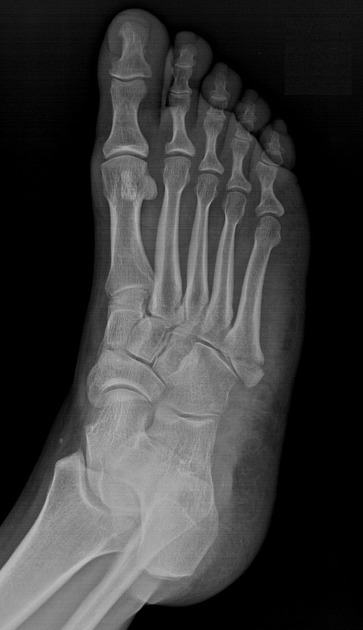
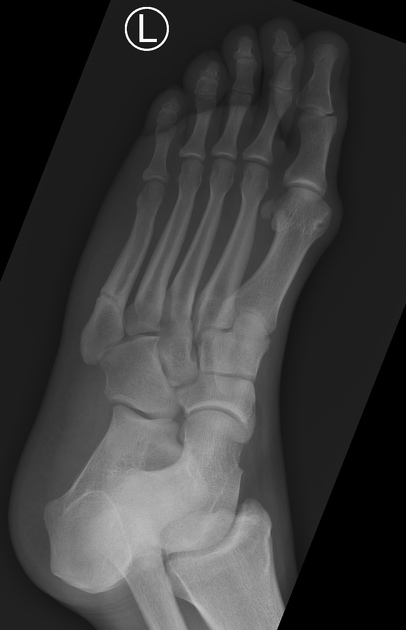
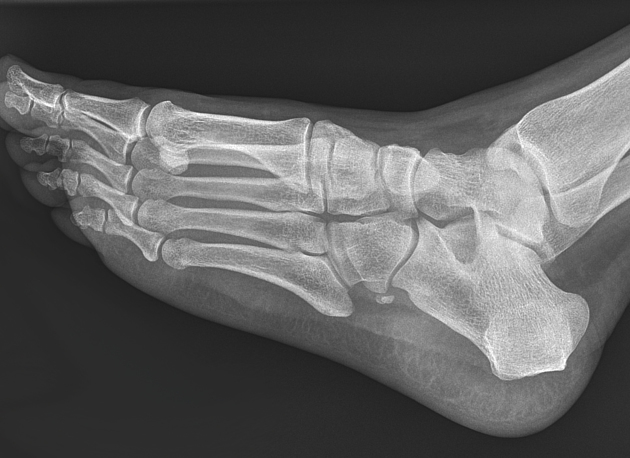

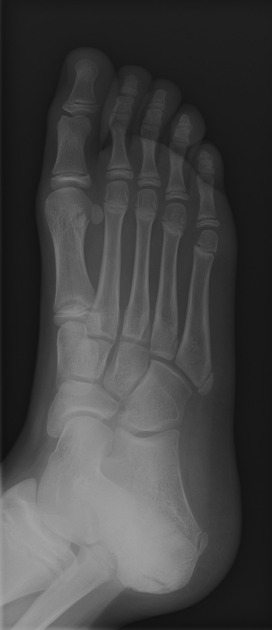
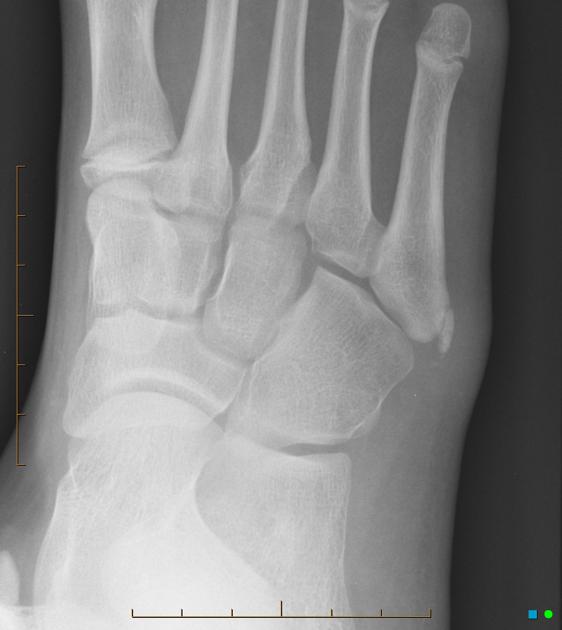
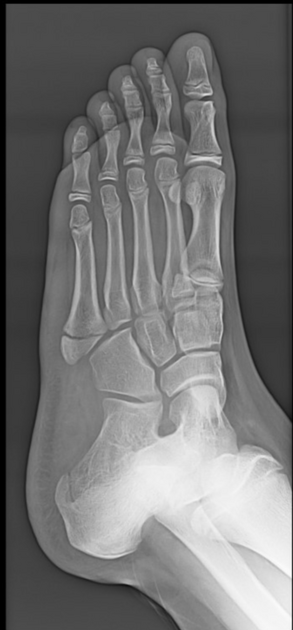


 Unable to process the form. Check for errors and try again.
Unable to process the form. Check for errors and try again.